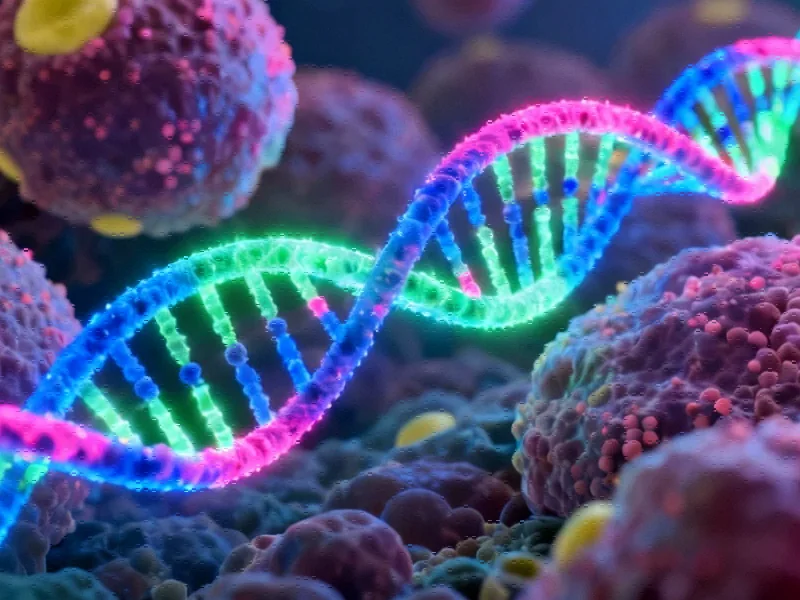Revolutionary Nano-Adsorbent Shows 94% Efficiency in Toxic Gas Removal
Researchers have developed a groundbreaking core-shell hybrid nanomaterial that demonstrates exceptional performance in capturing toxic hydrogen sulfide (H₂S) gas. The innovative MIL-101(Cr)@MIPs@H₂S adsorbent achieves remarkable 94.3% adsorption efficiency, representing a significant advancement in industrial gas treatment technology that could transform safety protocols across multiple sectors including oil refining, wastewater treatment, and chemical manufacturing.
Table of Contents
- Revolutionary Nano-Adsorbent Shows 94% Efficiency in Toxic Gas Removal
- Scientific Validation Through Rigorous Testing
- Advanced Material Characterization
- Surface Properties and Morphological Analysis
- Chemical Composition Verification
- Performance Optimization and Statistical Validation
- Industrial Implications and Future Applications
Scientific Validation Through Rigorous Testing
The research team employed sophisticated statistical methods to validate their findings, conducting ANOVA tests at a 95% confidence level to ensure model reliability. Each experiment was repeated at least three times under controlled conditions, maintaining constant humidity and ambient pressure to eliminate interfering variables. This meticulous approach enabled accurate system behavior modeling while optimizing operating conditions to maximize adsorbent efficiency.
The implementation of Response Surface Methodology (RSM) and Central Composite Design (CCD) provided scientific optimization of the H₂S adsorption process, reducing unnecessary experiments and consequently lowering both cost and development time. This structured experimental design represents a paradigm shift in how industrial adsorbent materials are developed and validated.
Advanced Material Characterization
X-ray diffraction analysis confirmed the successful synthesis of the MIL-101(Cr) core material, with patterns from 2θ to 80θ matching previous studies. The material maintained its cubic structure throughout the coating process, with diffraction peaks at 2θ values of 5.25, 5.88, 8.42, 9.06, and 16.50 corresponding to specific crystallographic planes. The absence of peaks indicating other structures or amorphous phases verified the high quality of the synthesized material.
Critical finding: The XRD patterns of the coated MIL-101(Cr)@MIPs/NIPs@HS particles closely resembled that of pure MIL-101(Cr), demonstrating that the polymer coating process doesn’t disrupt the underlying crystal structure. However, peak intensity reduction indicated successful incorporation of the metal-organic framework within the polymeric structure., according to industry experts
Surface Properties and Morphological Analysis
Brunauer-Emmett-Teller (BET) analysis revealed extraordinary surface characteristics for the base MIL-101(Cr) material, showing a mesoporous zeolite structure with a surface area of 3377.97 m²/g and pore volume of 1.49 cm³/g. These values align with the typical range for pristine MIL-101(Cr), which normally exhibits BET specific surface areas between 2000-3500 m²/g and pore volumes of approximately 1-1.8 cm³/g.
Scanning electron microscopy images displayed distinct morphological features:, as as previously reported
- Octahedral crystal morphology with two-sided pyramidal shapes for MIL-101(Cr)
- Spherical, uneven, porous microstructures for both polymer coatings
- Uniform polymer membranes successfully formed on MIL-101(Cr) surfaces
- Evident core-shell structure suitable for selective sensing applications
The surface area measurements showed significant differences between coated materials, with MIL-101(Cr)@MIPs@HS at 133.44 m²/g and MIL-101(Cr)@NIPs@HS at 95.92 m²/g. The higher values for MIPs are attributed to template presence and subsequent removal, contributing to enhanced specific surface area for rapid pattern loading.
Chemical Composition Verification
Fourier-transform infrared spectroscopy provided crucial insights into the chemical bonding and composition. The analysis confirmed successful bonding of metal clusters to HBDC carboxyl groups, evidenced by Cr-O stretching vibration at 567 cm⁻¹. The interaction between chromium ion carboxylate groups and terephthalic acid was verified by adsorption bands at 1567 cm⁻¹ and approximately 1600 cm⁻¹.
Key spectroscopic findings included:
- O-H stretch observed at approximately 3606 cm⁻¹
- Prominent peak at 1729 cm⁻¹ linked to C=O stretching vibrations
- C-H stretching vibration at around 2972 cm⁻¹ indicating polymer influence
- O-C-O framework vibrational flexibility band at 1636 cm⁻¹ confirming structural integration
Performance Optimization and Statistical Validation
The research team achieved optimal adsorption capacity through sophisticated modeling and testing. The quadratic model was selected based on excellent fitted values (R=0.99) and predicted values (R=0.97), demonstrating high predictive accuracy. The Lack of Fit test for the quadratic model showed statistical insignificance, confirming successful model fitting.
Remarkable performance results revealed that MIL-101(Cr)@MIPs@HS achieved an adsorption capacity of 360.11 mg/g (94.3% efficiency), dramatically outperforming the non-imprinted polymer version MIL-101(Cr)@NIPs@HS, which reached only 5.97 mg/g (9.9% efficiency). This substantial difference underscores the importance of molecular imprinting technology in creating specific binding sites for enhanced H₂S capture.
Industrial Implications and Future Applications
The development of this advanced nanomaterial represents a significant leap forward in industrial gas treatment. The core-shell structure prevents nonspecific adsorption while maintaining high selectivity for H₂S molecules. The material’s stability, regenerability, and exceptional performance under optimized conditions position it as a promising solution for various industrial applications where H₂S removal is critical for safety, environmental compliance, and process efficiency.
With nitrogen adsorption-desorption isotherms at 77 K confirming favorable porosity characteristics and ANOVA analysis validating the statistical significance of key parameters including adsorbent dose, concentration, and temperature, this technology demonstrates both scientific rigor and practical applicability. The minimal lack of fit (F value of 4.55) and low probability of random noise (1.54%) provide additional confidence in the reliability of these findings for industrial implementation.
This breakthrough in nano-adsorbent technology opens new possibilities for efficient, cost-effective toxic gas removal across multiple industries, potentially setting new standards for environmental protection and workplace safety in facilities dealing with hydrogen sulfide emissions.
Related Articles You May Find Interesting
- African-Led Climate Research Gains Global Backing with €4.29 Million Investment
- U.S. Manufacturing Shift: How China’s Top Exports to America Have Been Redistrib
- The Unconventional Leadership Playbook: How Handwritten Notes and Breakroom Lunc
- Sustainable Construction Breakthrough: Recycled PET Composites Reinvent Structur
- AI-Powered Stethoscopes: The Next Frontier in Early Disease Detection
This article aggregates information from publicly available sources. All trademarks and copyrights belong to their respective owners.
Note: Featured image is for illustrative purposes only and does not represent any specific product, service, or entity mentioned in this article.



